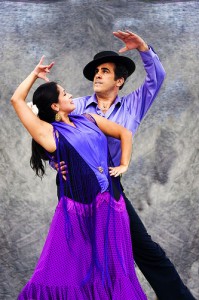Flamenco is so inextricably linked with the culture of Spain, it’s almost impossible for most people who live outside of the country to not link it instantly. As a fusion of dance and music, Flamenco captures the passion and energy that’s synonymous with Spanish life.
As with many traditions, the history of Flamenco is something of a mystery, with many scholars researching its origins. One thing that is clear is the derivation of the name, as ‘Flamenco’ translates as ‘flame-like’. This is incredibly apt, as the dance movements are exaggerated yet graceful and the music bursts with energy. A Flamenco performance can make the atmosphere crackle as the shadows of the performers grace the walls, like a sensual tapestry.
The Origins Of Flamenco
To find out more about this incredible artform, let’s travel back in time some to the 18th century. The preferred music of the upper classes was highbrow, intricate concert pieces, or finely arranged chamber music. There was a delicacy and thoughtfulness, which spanned the bombastic to the intimate, and was seen by many influential people as the music humans should aspire to.
But underneath all of this, among the masses, was a wide and varied movement of folk music. With different styles that varied from country to country, region to region, creed and ethnicity, these performances acted like stamps on the world. Folk music and dances were a signature to other places and peoples.
It is this culmination of dance and music styles that is thought to have given birth to Falmenco, particularly dancing competitions held between regions. These competitions would be held between Romany Gypsies and non-gypsies alike, each pushing and influencing each other’s styles. This fusion is thought to have sown the seeds of Flamenco, particularly merging the dances and music of Romany styles and Andalusia in Southern Spain.
Flamenco At The Royal Court
However, it is believed that Charles I of Spain, and other Spanish nobles, often invited folk musicians to perform at court. However, these were musicians and dancers that had trained to become the best in their field, offering perhaps a more formal, sanitised version of the traditional folk dance.
Initially, Flamenco was performed with only vocal accompaniment, with the dancers themselves providing percussion with maracas or castanets. As Flamenco developed into the latter part of the 18th century and early 19th century, the Flamenco guitar became an essential element to these performances.
Today, Flamenco is seen as one of the most vibrant and richest dances in the world, taught and performed all over the world. In fact, Japan has more Flamenco academies than Spain!
There’s no denying that Flamenco has developed and grown to be even more popular than ever, continuing a noble tradition of dance and music.
License: Creative Commons image source
Citations:

